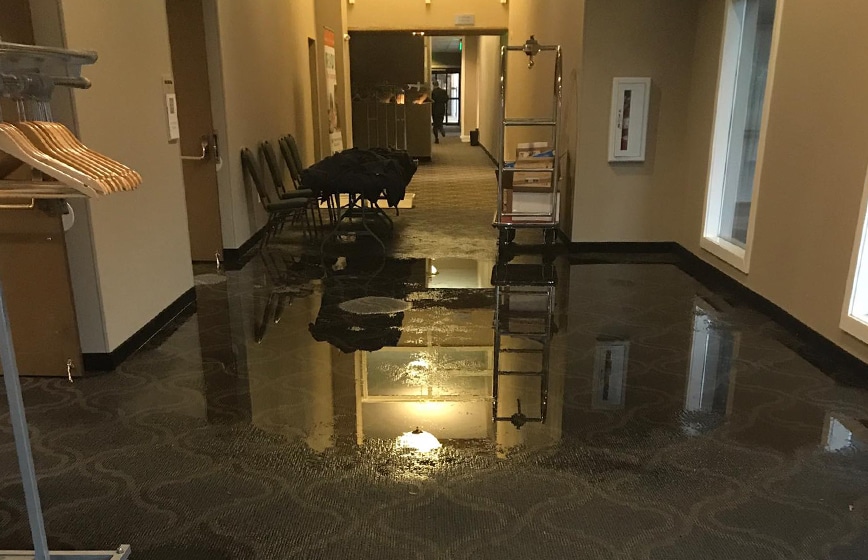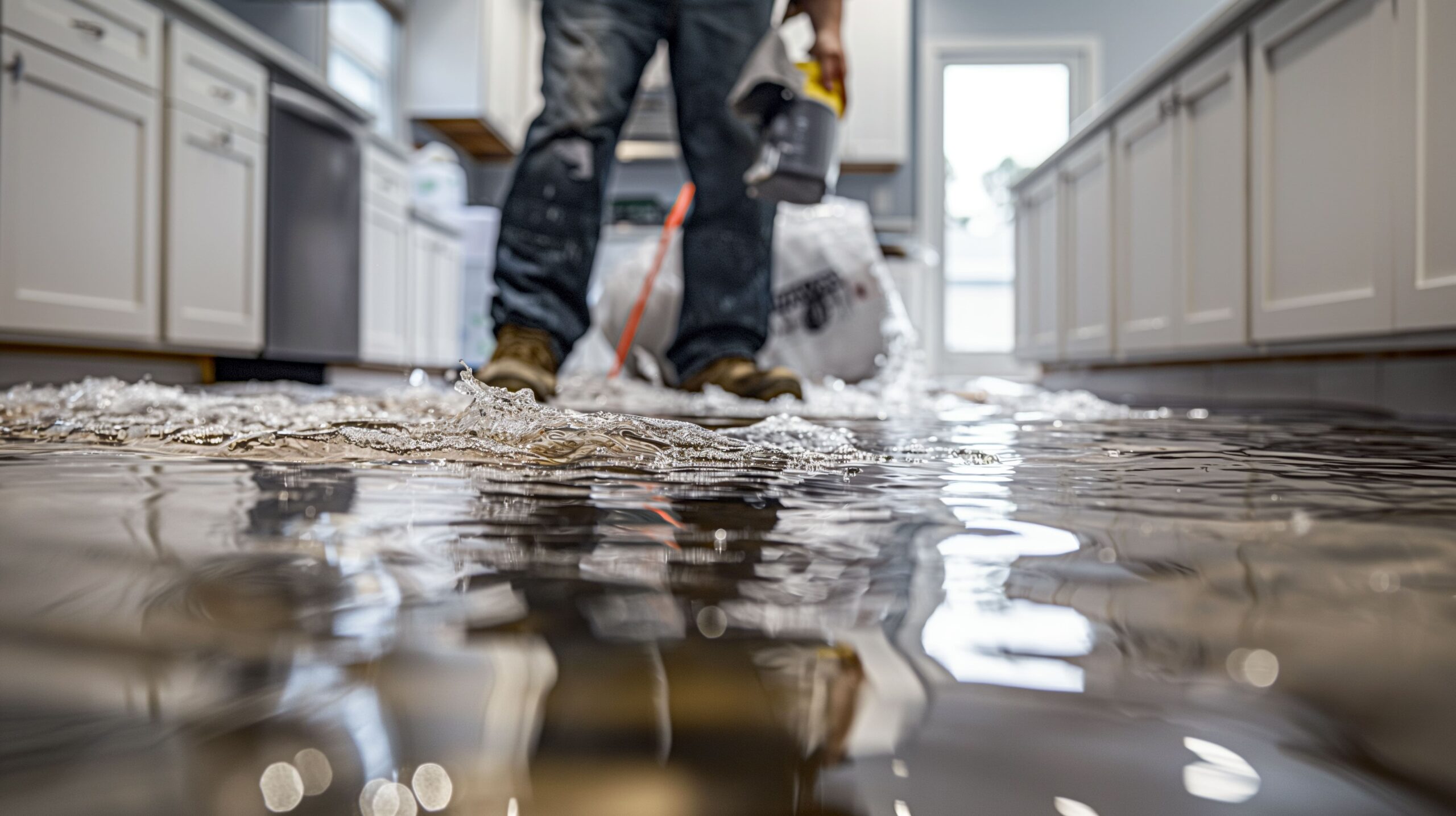Water Damage Restoration 101: Recognizing the Process and Price
Water damage can strike all of a sudden, leaving house owners in a state of complication. Recognizing the remediation procedure is essential for effective recuperation. From examining the damage to selecting the best solution copyright, each action affects the general outcome and expense. Factors such as the kind of water damage and seriousness likewise play a substantial duty. What are the details strategies made use of in reconstruction, and just how can one get ready for possible expenses?
Kinds of Water Damage
Water damage can arise from different resources, each presenting distinct difficulties for repair. The three primary sorts of water damage are categorized based on contamination degrees: clean water, gray water, and black water. Tidy water stems from sources like broken pipelines or rain, presenting very little health and wellness risks. Gray water, that includes wastewater from sinks or cleaning makers, has impurities that may cause pain or health problem if ingested. Black water, the most unsafe classification, comes from sewer or floodwaters, consisting of dangerous bacteria and virus. Each type demands details reconstruction methods and precaution to efficiently address the damage and alleviate wellness risks. Recognizing these differences is crucial for specialists and property owners associated with the water damage repair process.
Initial Assessment and Examination
A detailed initial evaluation and examination are vital action in the water damage remediation process. This stage starts with a specialist assessing the degree of the damage, recognizing the resource of the water breach, and establishing the kind of water involved - Flood Cleanup Services. Technicians make use of specific devices to measure wetness levels in different products, such as walls, floors, and furniture. Furthermore, they analyze structural honesty and possible wellness hazards, including mold growth. The findings from this evaluation notify the remediation plan, directing needed activities and resource allotment. Accurate documents of the damage is vital for insurance policy claims and future referral. Generally, this first assessment prepares for effective repair, making sure an in-depth reaction to the particular situation at hand

Water Extraction Techniques
Adhering to the first evaluation, effective water removal methods are utilized to mitigate damage and protect against further concerns. These techniques entail using specialized tools such as submersible pumps and industrial-grade vacuums. The choice of method relies on the quantity of water present and the sort of products affected. For standing water, completely submersible pumps are typically used for rapid removal, while vacuum cleaners are optimal for extracting water from rugs and furniture. Furthermore, progressed techniques like water removal mats may be utilized for hard-to-reach locations. The objective is to remove as much water as feasible, minimizing the capacity for mold and mildew development and architectural damage. Motivate and efficient water extraction is important in the total water damage repair procedure.
Drying and Dehumidification Process
As soon as the water extraction is full, the drying and dehumidification procedure becomes essential to recovering the affected area. This phase usually utilizes industrial-grade dehumidifiers and air movers to effectively decrease wetness levels. The dehumidifiers draw in damp air, removing excess moisture, while air movers distribute air to increase dissipation. Monitoring devices is usually used to track moisture and temperature level degrees, guaranteeing excellent drying out conditions. The duration of this process can vary depending on the level of the water damage and environmental aspects. It is crucial to thoroughly completely dry all affected materials, including wall surfaces, floor covering, and furnishings, to prevent mold and mildew growth and structural damage. Proper implementation of this action is essential for an effective remediation end result.
Cleansing and Disinfecting Damaged Locations

First Analysis and Examination
Before beginning any type of restoration initiatives, a detailed first evaluation and evaluation of the affected locations are crucial for efficient cleaning and disinfecting. This procedure includes determining the extent of water damage, identifying the source of the water breach, and examining the products influenced. Inspectors normally try to find signs of mold and mildew development, architectural honesty issues, and harmed possessions. The analysis likewise consists of checking moisture degrees making use of specific devices to assure no hidden water pockets remain, as these can bring about further difficulties. Documenting the searchings for is necessary for preparing the next steps in the repair process. An in-depth initial evaluation makes it possible for repair experts to design a targeted method for reliable cleaning and disinfecting, ultimately lessening damage and health and wellness risks.
Cleaning Up Strategies and Products
Reliable cleaning and sterilizing of water-damaged locations need a range of products and techniques customized to the specific materials affected. For permeable surface areas like drywall and carpeting, removal methods are necessary to eliminate excess wetness, adhered to by deep cleansing with specialized cleaning agents. Non-porous products such find here as ceramic tile or metal can be cleaned using commercial-grade cleaners that efficiently eliminate contaminants. Steam cleaning is another effective strategy, especially for carpetings and furniture, as it utilizes heats to eliminate germs and mold. Additionally, green products are progressively prominent for their security and effectiveness. Inevitably, choosing the proper cleansing techniques and products not only assures instant tidiness yet likewise aids in protecting against additional damage and carcinogen connected with water invasion.
Sanitization and Disinfection Approaches
When attending to water damage, proper sanitization and sanitation techniques are vital to ensure the security and wellness of the damaged environment. After first cleansing, surfaces must be treated with ideal anti-bacterials to get rid of pathogens, mold and mildew, and microorganisms that prosper in wet problems. Typical approaches consist of making use of EPA-approved chemical anti-bacterials, which can be applied with splashing or cleaning strategies. Furthermore, ultraviolet (UV) light systems can effectively disinfect areas by reducing the effects of microorganisms without extreme chemicals. The option of method usually depends upon the kind of products affected and the degree of contamination. Ultimately, thorough sanitization not just restores a secure home yet likewise assists protect against future health and wellness risks related to remaining moisture and mold development.

Repairs and Restoration Options

Elements Affecting Restoration Costs
The degree of water damage directly affects the remediation costs house owners can expect to incur. Variables such as the resource of the water, the duration of exposure, and the damaged materials significantly influence pricing. Tidy water damage from a busted pipeline is usually less expensive to restore contrasted to damage triggered by sewer (Flood Cleanup Services). Furthermore, the degree of contamination dictates the demand for specialized cleansing and disposal services, further raising expenses. Geographic place also plays a function, as local labor rates and availability of repair solutions can differ. Ultimately, the urgency of the reaction influences expenses; quicker interventions typically lead to reduce general expenses by stopping additional damage. Comprehending these factors is essential for home owners when approximating remediation costs
The 3 primary kinds of water damage are categorized based on contamination levels: clean water, grey water, and black water. A detailed initial assessment and examination are crucial actions in the water damage repair procedure. For standing water, submersible pumps are normally utilized for fast elimination, while vacuum cleaners are suitable for removing water from carpets and furniture. The extent of water damage directly influences the remediation costs homeowners can anticipate to sustain. Tidy water damage from a busted pipeline is typically less costly to recover compared to damage created by sewage.